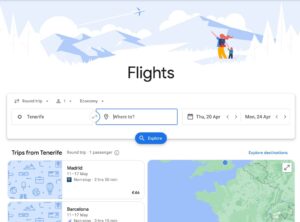It’s always more boring and longer to debunk nonsense than to make it up, so there will be four parts.
But detailed and thorough. Probably tedious. But definitely more useful than one of shoddy reels.

Buying tickets on Tuesday to Wednesday nights
The first misconception revolves around the idea of buying tickets on Tuesday night to Wednesday night. It is believed that during this time, ticket distribution systems update their internal exchange rates, potentially leading to cheaper fares. However, this practice has not had any significant impact for a long time. Most airlines have adopted dynamic pricing, where they upload prices in dollars to the Global Distribution System (GDS). Prices in other currencies are then converted to dollars in real-time, with rounding done in favor of the airline. The only scenario where currency tricks might work is when purchasing tickets in a country with a recent currency devaluation. Nevertheless, such devaluations are rare, and airlines quickly adjust their pricing mechanisms to account for fluctuations. Moreover, these tricks do not work automatically when searching for tickets; one must intentionally visit the airline’s website and select the desired currency.
The second misconception pertains to the notion of statistically favorable days of the week for buying tickets. Although many aggregators have conducted price analytics and identified weak correlations between ticket prices and the day of the week, these findings are not particularly helpful when it comes to buying a specific ticket. Various factors carry different weights in determining ticket prices, such as the time remaining until departure, the season, demand elasticity, and competition on the route. While waiting for a specific day of the week to potentially save 5%, other factors, like the time remaining before departure, may come into play and cause the ticket price to increase by 15%.
In essence, the author suggests that the general rule for purchasing tickets is simple: if you are satisfied with the ticket price, go ahead and purchase it. However, if you find the price unfavorable, it is advisable to monitor the price and look out for sales. Waiting for a specific day, such as a full moon Tuesday, in hopes of a guaranteed discount is futile. It is essential to consider various factors and seize opportunities when they arise, rather than relying on arbitrary rules.
Dashing the Myth: How Incognito Mode Plays with Your Flight Ticket Shopping
There’s a prevailing myth out there that might have ensnared you. You know the one, the tale that insists that the more you stare at a flight ticket online, the steeper the price gets. It’s as though airlines have a sixth sense about your interest and then decide to toy with your wallet. They say that going incognito, like a browser-based secret agent, can protect you from such predatory practices. Hate to burst your bubble, but that’s utter nonsense!
Firstly, let’s have a bit of a tech talk. The possibility of airlines hiking the prices as you scout for tickets on aggregators is zilch, nada, none! You see, airlines send their ticket prices to Global Distribution Systems (GDS). Online Travel Agencies (OTAs, think of them as ticket sales websites), either take the price from the GDS or occasionally ask the airlines directly. This is akin to the workings of an intricate, digital marketplace.
Once the OTAs get their hands on the price, they cache it – sort of like squirreling it away. Then the aggregator waltzes in, checks the price with the OTA, adds it to their own stash, and voila, we have a game of online tag going on here. Here’s the kicker, though – until you, the customer, find the ticket on the aggregator, venture to the OTA’s website, and input your details, the OTA doesn’t even check the GDS for the price or make the reservation. The airline may be utterly oblivious to your existence, let alone your interest in the ticket. So, how on earth could they hike the price?
Moreover, imagine what would happen if aggregators and OTAs start inflating prices. The competition, my friend, would gobble them up. If an OTA decides to up their flight price, the aggregator would jump at the chance to display another, cheaper OTA. It’s a dog-eat-dog world!
But wait, what if you’re ticket hunting directly on an airline’s website? Now that’s a different ballpark. Some airlines, especially a few of those pesky low-cost ones, could hike the price if they sniff out high demand. You’d think going incognito or changing IP addresses would fool them, wouldn’t you? But surprise, surprise! It won’t. The price would stubbornly stay up until time has passed and demand has waned. Essentially, the info about high demand sticks to the flight like glue, from the airline’s server end, not your browser end. A workaround? Browse for tickets a day ahead of your intended date and then play around with the calendar.
Here’s an unexpected twist, though: incognito mode could potentially sabotage your ticket hunt! Ever heard of the marketing mantra that a warm but undecided customer is easier to win over than a cold one? Websites (whether it’s an airline, aggregator, or an OTA) may actually be motivated to sweeten the deal for you if they notice your repeated visits without a purchase. Maybe they’ll dangle a discount or a promo code to entice you, or offer you a cheaper ticket by shaving off their profit margin. Alas, if you’re incognito, they can’t see your browsing pattern, and you might miss out on potential deals!
Lastly, going incognito might also be inadvertently affecting your favorite bloggers and publishers. Their markers are reset in this mode, and they lose out on some income.
So, the bottom line: think twice before you don your digital invisibility cloak. Your flight ticket quest might not be as covert as you believe!
Skiplugging
“Skiplugging” is a travel hack that promises huge savings on airfare, but is it really as effective as it seems? After many trials and tribulations, it’s clear that the devil is in the details.
The basic concept behind skiplugging is deceptively simple. Instead of booking a direct flight to your destination, you purchase a ticket for a different location that has a layover at your intended destination. When you reach the layover city, you simply disembark and leave the airport. On paper, it transforms any ticket into a direct flight to your desired location, often at a significantly lower cost.
However, while this trick sounds clever, its practicality is incredibly limited.
To begin with, the destination city must be a major hub with its own anchor airline. Moreover, it only works for one-way tickets, making round-trip travel problematic. If you require a visa for your supposed final destination and don’t have one, you risk not being checked in, as the agent must verify visas for the final destination, not just the layover city.
Furthermore, airlines are wise to this tactic and may refuse to check luggage to the intermediate airport, creating a potential nightmare for those with more than just carry-on bags. And if you think airlines are passive in this regard, think again. Some airlines have taken legal action against skipluggers, even revoking their status levels and miles.
My experience with skiplugging has been far from successful. Out of 341 flights, I considered using this strategy only 10-15 times. Unfortunately, it is a rare occurrence when all the necessary conditions align to make skiplugging feasible. Even then, it only worked a miniscule 2 out of 341 times, a paltry success rate of 0.58%. So much for being a universal solution.
The skiplugging booking service, Skiplagged, also proved less than helpful. Despite its promise to find the best deals, it offered fewer options than larger aggregators, often failing to display the best prices, even when it found a suitable layover segment. In fact, my only two successful skiplugging instances were discovered through painstaking manual searches on Google Flights.
In conclusion, while skiplugging can be seen as a clever travel trick, its practical application is undeniably restricted. It’s vital to be aware of these limitations before you set your hopes on this strategy. In my experience, it’s far from being the magic bullet for cheap travel it’s often made out to be. Remember, while it may sound tempting to bend the rules, it’s not always as glamorous or practical as it appears.
Under a VPN, ticket prices are lower
Browsing under a Virtual Private Network (VPN) could be your golden ticket to lower flight fares! So, you might ask, what sorcery is this? How can a VPN help us score cheaper tickets? To answer that, let’s delve into the world of VPNs and internet booking wizardry.
Primarily, a VPN masks your digital footprint, making it seem like you’re browsing from another country. Now, imagine visiting an airline website under various VPN guises. At first, everything looks the same. The ticket prices don’t vary, but the site might enforce a currency switch, causing a slight loss on conversion. But here’s where it gets interesting. The ticket price you see often includes marketing costs.
Enter online travel agencies. Given their “bulk buying” status, they often receive wholesale discounts and can sell tickets cheaper than the airline’s website. To outshine each other and grab the top spot on flight aggregators, these agencies are willing to cut their profits, leading to even cheaper ticket prices. You might find that tickets purchased via airseals through platforms like kupibillet could be more affordable than those on the airline’s website.
But, it gets even more intriguing. These discounts aren’t uniform—they vary by country and airline. It’s like solving a puzzle, selecting the best country to book from for a specific airline. It’s practically a science of its own, filling countless forum threads. I often cross-check prices on Danish, Saudi, and Korean sites before booking since these often have the deepest discounts.
Now, let’s circle back to VPNs. Are they really this magic tool to cheaper airfares? Can simply swapping countries lower the ticket price? Well, here’s a revelation: you don’t need a VPN to switch your virtual country! All it takes is manually changing the domain in the address bar. Swap out ‘momondo.com’ with ‘momondo.dk’, or ‘skyscanner.com’ with ‘skyscanner.com.sa’, depending on your chosen country, and voila! No VPN required!
However, it’s essential to remember there’s no golden rule like “always use a VPN from country X for the lowest price”. But, tinkering with the booking country might unearth some surprising deals.
Still, don’t write off VPNs yet. The advice to use them holds its weight, primarily because it doesn’t worsen your browsing experience. In fact, strolling through the digital world with a VPN turned on is generally a prudent move. So, while it may not always land you cheaper air tickets, it definitely makes your internet journey a lot safer and secure.


